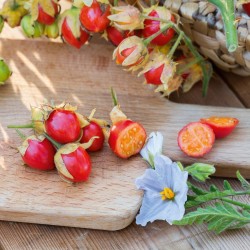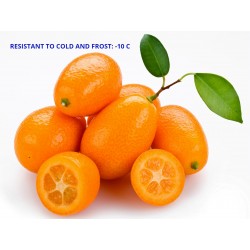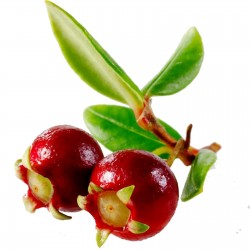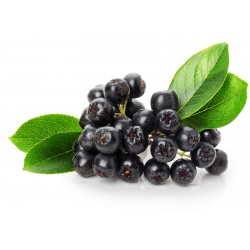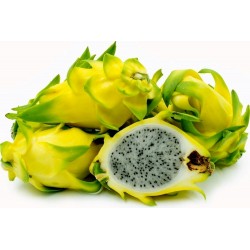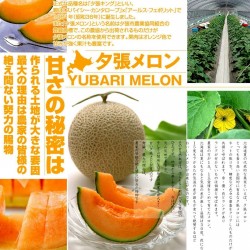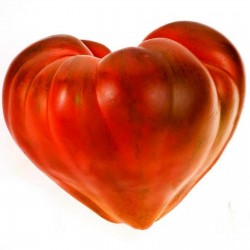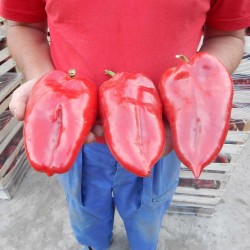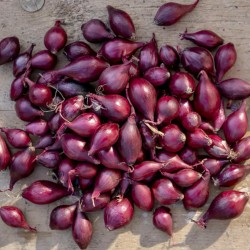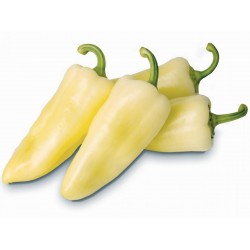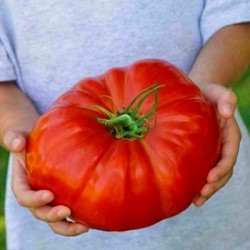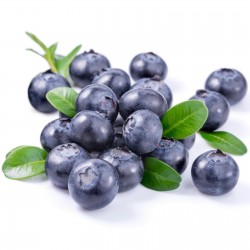
Σπόροι Μυρτιλο Blueberries...
Τιμή
2,50 €
SKU: V 194 VA
Seeds Gallery Com,
5/
5
<!DOCTYPE html>
<html>
<head>
<meta http-equiv="Content-Type" content="text/html; charset=UTF-8" />
</head>
<body>
<h2><span style="text-decoration: underline;"><em><strong>Σπόροι Μυρτιλο Blueberries (Vaccinium angustifolium)</strong></em></span></h2>
<h3><span style="color: #ff0000;"><strong>Τιμή για το πακέτο των 20 σπόρους.</strong></span></h3>
<div>Το μύρτιλλο είναι ένα φυτό που περιλαμβάνει πολλά είδη με μεγάλη γεωγραφική εξάπλωση. Στην Ευρώπη υπάρχουν πολλά αυτοφυή είδη μύρτιλλου, με πιο γνωστά το Vaccinium myrtillus και το Vaccinium uliginosum, τα οποία απαντώνται με τη μορφή χαμηλού θάμνου μέσα στα δάση.</div>
<div> </div>
<div>Η Δράμα έχει ιδανικό κλίμα, αλλά και εξίσου ιδανική σύσταση εδάφους για την καλλιέργεια του μύρτιλλου. Διαπιστώθηκε τα τελευταία χρόνια που ξεκίνησε η παραγωγή του, ότι εκτός από τη Λευκορωσία και τις παγωμένες βόρειες χώρες, ευδοκιμεί θαυμάσια και εδώ».</div>
<div> </div>
<div><strong>Χαμηλές θερμοκρασίες</strong></div>
<div>Για να ευδοκιμήσει το είδος αυτό του μύρτιλλου χρειάζονται πολύ χαμηλές θερμοκρασίες στη διάρκεια του χειμώνα και για τον λόγο αυτό σχεδόν όλες οι καλλιέργειες blueberries βρίσκονται στη Σιβηρία, τη Ρωσία, τον Καναδά και γενικά τις βόρειες χώρες. </div>
<div> </div>
<div><strong>Ασπίδα για τον διαβήτη</strong></div>
<div>Τo bluebbery ανήκει στην οικογένεια των μύρτιλλων (οικογένεια βακκινίων - vaccinium) και είναι παγκοσμίως γνωστό για τις πολλαπλές διατροφικές και φαρμακευτικές χρήσεις.</div>
<div> </div>
<div>Τα blueberries είναι πλούσια σε αντιοξειδωτικές βιταμίνες Α, C, Ε και Β- καροτίνη, σε κάλιο, μαγνήσιο, φωσφόρο και φυτικές ίνες. Αντίθετα, είναι φτωχά σε λίπος, νάτριο και θερμίδες, γεγονός που τα τοποθετεί στην πρώτη βαθμίδα της υγιεινής διατροφής.</div>
<div> </div>
<div>Διαφημίζονται ως πηγή αιώνιας νιότης και οι τρέχουσες μελέτες για τα οφέλη τους στρέφονται σε αντιοξειδωτική δραστηριότητα, αντιγήρανση, πρόληψη καρκίνου, καρδιακή και εγκεφαλική λειτουργία, υγεία όρασης και ουροποιητικού συστήματος.</div>
<div> </div>
<div>Επίσης, το αφέψημα από φύλλα χάρη στη μεγάλη περιεκτικότητα γλυκοζοειδών και νεομυρτιλίνης (χρησιμοποιείται για τη θεραπεία του σακχαρώδους διαβήτη) είναι ένα ευεργετικό ρόφημα που βοηθάει στην αντιμετώπιση του προβλήματος της υψηλής συγκέντρωσης σακχάρων στο αίμα.</div>
<div> </div>
<div><strong>Αποδοτική καλλιέργεια </strong></div>
<p>Οικονομικά η καλλιέργεια του blueberry είναι αποδοτική με δεδομένη την υψηλή τιμή του προϊόντος: ένα κεσεδάκι νωπών blueberries, βάρους 125 γραμμαρίων, πωλείται στη λιανική τιμή προς 5 ευρώ, ενώ οι χυμοί στοιχίζουν 3,30 ευρώ το μπουκάλι, η κομπόστα και η μαρμελάδα 6,30, η πάστα 7,60 και τα αποξηραμένα φύλλα (πίνονται ως ρόφημα) 1,5 ευρώ η συσκευασία.</p>
<table border="1" cellspacing="0" cellpadding="0">
<tbody>
<tr>
<td colspan="2" valign="top" width="100%">
<p><span style="color: #008000;"><strong>Sowing Instructions</strong></span></p>
</td>
</tr>
<tr>
<td valign="top" nowrap="nowrap">
<p><span style="color: #008000;"><strong>Propagation:</strong></span></p>
</td>
<td valign="top">
<p><span style="color: #008000;">Seeds / Cuttings</span></p>
</td>
</tr>
<tr>
<td valign="top" nowrap="nowrap">
<p><span style="color: #008000;"><strong>Pretreat:</strong></span></p>
</td>
<td valign="top">
<p><span style="color: #008000;">Pour hot water over the seeds and put them in water 6 hours.</span></p>
</td>
</tr>
<tr>
<td valign="top" nowrap="nowrap">
<p><span style="color: #008000;"><strong>Stratification:</strong></span></p>
</td>
<td valign="top">
<p><span style="color: #008000;">about 1 month in a moist substrate at 2-5 ° C in a refrigerator or cold house</span></p>
</td>
</tr>
<tr>
<td valign="top" nowrap="nowrap">
<p><span style="color: #008000;"><strong>Sowing Time:</strong></span></p>
</td>
<td valign="top">
<p><span style="color: #008000;">all year round</span></p>
</td>
</tr>
<tr>
<td valign="top" nowrap="nowrap">
<p><span style="color: #008000;"><strong>Sowing Depth:</strong></span></p>
</td>
<td valign="top">
<p><span style="color: #008000;">Needs Light to germinate! Just sprinkle on the surface</span></p>
<p><span style="color: #008000;">of the substrate + gently press</span></p>
</td>
</tr>
<tr>
<td valign="top" nowrap="nowrap">
<p><span style="color: #008000;"><strong>Sowing Mix:</strong></span></p>
</td>
<td valign="top">
<p><span style="color: #008000;">Coir or sowing mix + sand or perlite</span></p>
</td>
</tr>
<tr>
<td valign="top" nowrap="nowrap">
<p><span style="color: #008000;"><strong>Germination temperature:</strong></span></p>
</td>
<td valign="top">
<p><span style="color: #008000;">about 20-23 ° C.</span></p>
</td>
</tr>
<tr>
<td valign="top" nowrap="nowrap">
<p><span style="color: #008000;"><strong>Location:</strong></span></p>
</td>
<td valign="top">
<p><span style="color: #008000;">bright + keep constantly moist not wet</span></p>
</td>
</tr>
<tr>
<td valign="top" nowrap="nowrap">
<p><span style="color: #008000;"><strong>Germination Time:</strong></span></p>
</td>
<td valign="top">
<p><span style="color: #008000;">Germination takes up</span></p>
</td>
</tr>
<tr>
<td valign="top" nowrap="nowrap">
<p><span style="color: #008000;"><strong>Watering:</strong></span></p>
</td>
<td valign="top">
<p><span style="color: #008000;">Water regularly during the growing season</span></p>
</td>
</tr>
<tr>
<td valign="top" nowrap="nowrap">
<p><span style="color: #008000;"><strong> </strong></span></p>
</td>
<td valign="top">
<p><span style="color: #008000;"><em>Copyright © 2012 Seeds Gallery - Saatgut Galerie - Galerija semena</em></span></p>
<p><span style="color: #008000;"><em>. </em><em>All Rights Reserved.</em></span></p>
</td>
</tr>
</tbody>
</table>
<div> </div>
<div> </div>
</body>
</html>
V 194 VA





